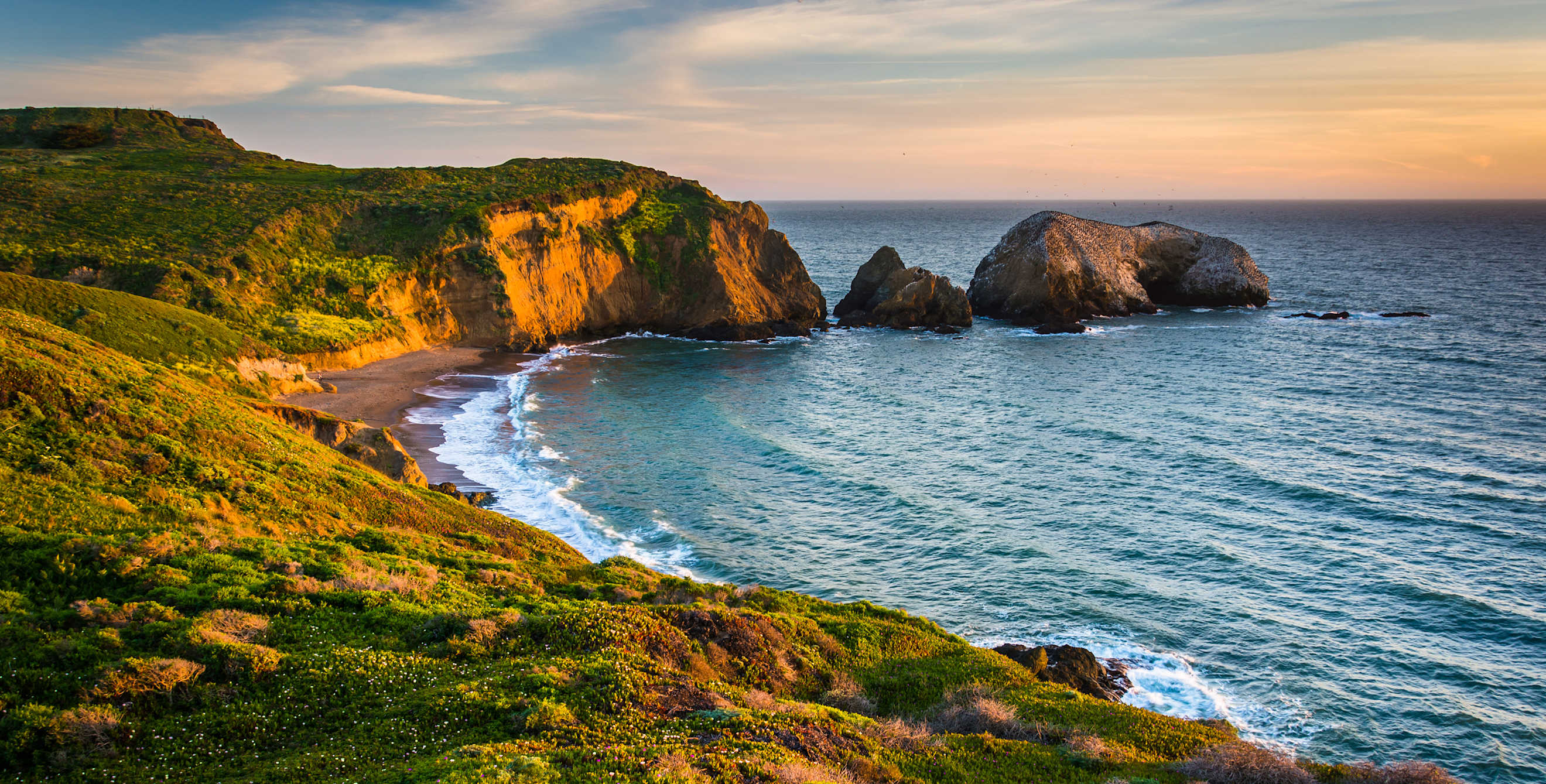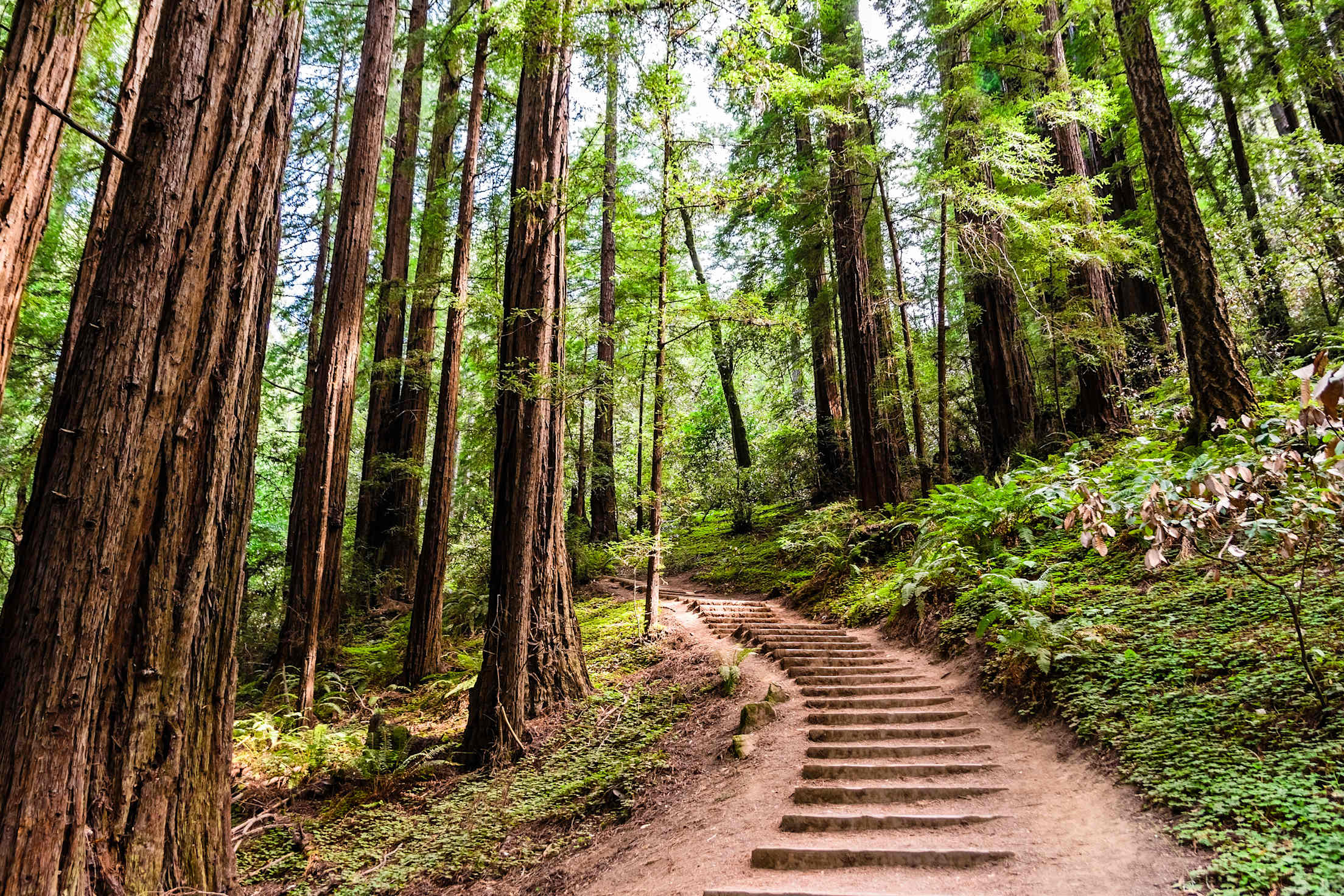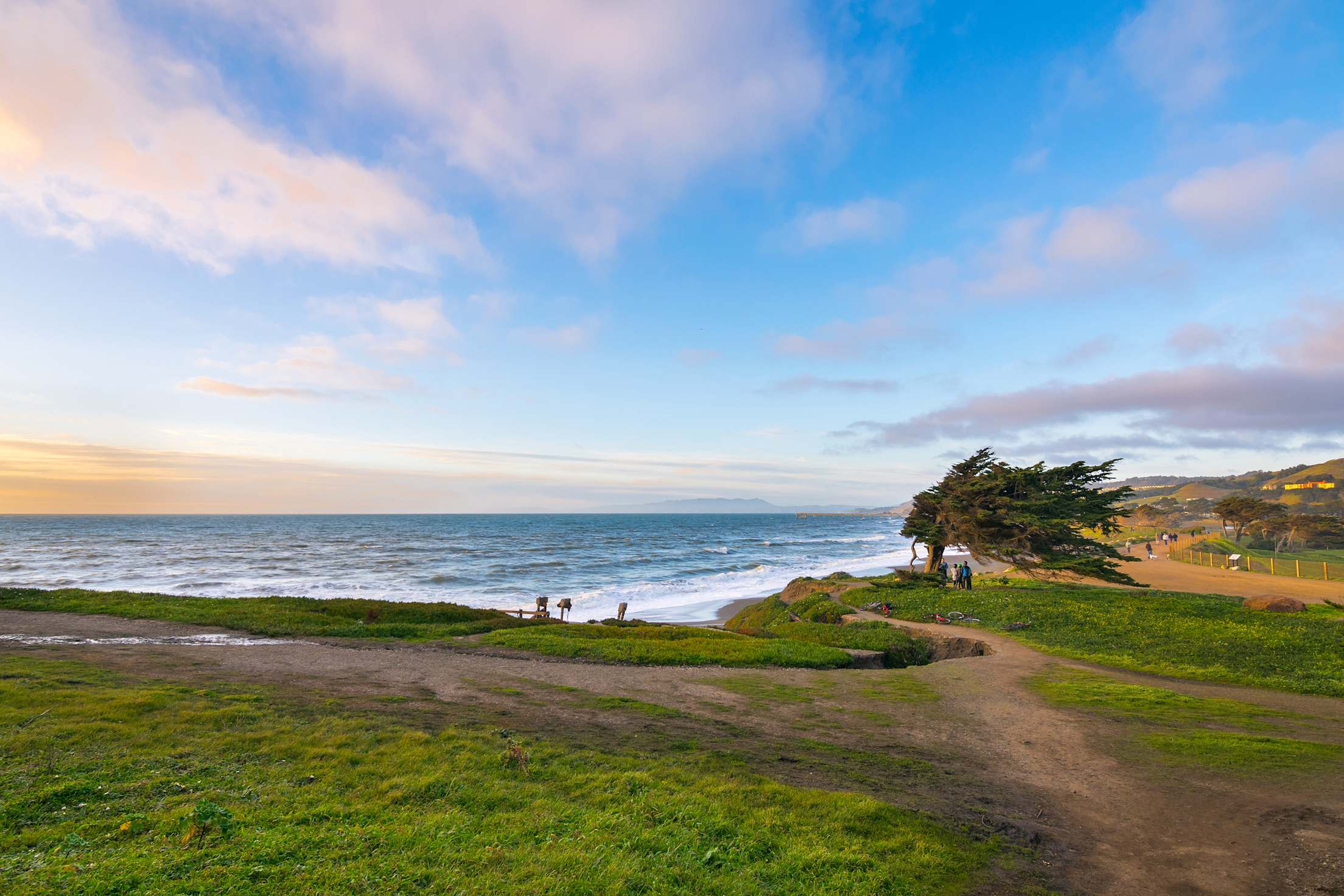
Golden Gate National Recreation Area Top Sights
Visit the Golden Gate National Recreation Area for a glimpse of California's mystical outdoors.

In 1846, explorer John C. Frémont christened the entrance to San Francisco Bay “Chrysopylae,” or Golden Gate. He compared it to the Golden Horn, a beautiful harbor in ancient Byzantium (Istanbul, Turkey) where land, sea, and the human race had converged for thousands of years. He didn’t know how apt that name would become.
Frémont may have noticed the many shades of gold that speckled the region: fields of orange poppies (now the state flower), hillsides of flaxen grass, and long afternoons filled with golden light. But he couldn’t have known that two years after the name was recorded, a pioneer would discover gold at Sutter’s Mill. The shiny nuggets made San Francisco and the West the land of golden opportunity. Today the Golden Gate Strait, which connects the bay to the Pacific Ocean, is the centerpiece of the Golden Gate National Recreation Area, a string of 37 public sites that preserve dozens of miles of spectacular coastline extending to the north and south.

The scale of Muir Woods impresses all sizes.
Among the park’s many attractions are more than 130 miles of paths, 1,200 historic buildings, and 19 ecosystems. Sites include the renowned Muir Woods, Lands End, and Alcatraz, as well as lesser-known locales such as the Tomales Bay viewpoint at Martinelli Ranch and the paved Sneath Lane Trail at Sweeney Ridge, where Spaniards first spotted San Francisco Bay in 1769. The sheer breadth of the park leaves parts of it overlooked, even by locals.
At the heart of the recreation area are two tips of land bounding the strait: the Marin Headlands and the city of San Francisco, both of them beautiful places where people, land, and sea have come together to make history.
“The coast draws us,” says John Martini, who grew up in San Francisco and was a national park ranger for over 25 years. “The headlands of San Francisco and Marin are the ultimate example, especially during the American era, of how people were being drawn west as far as they could go.”
Debra Schwartz, founder of Tam Hiking Tours, which offers guided hikes on Mount Tamalpais, has walked the Marin Headlands for three decades and is still entranced by watching local weather patterns. “Depending on the time of year, when there’s a blue sky, the clouds will appear from nowhere, then race across the ridges,” she says. “It looks as if someone were blowing bubbles.”
For Schwartz, the headlands provide both adventure and retreat. “It’s quiet, and you get the whole ocean spreading out all around you,” she says. “It smells heavenly because of the blend of chaparral and sage.” She points out that the surface of the area’s Coastal Trail, partly a layered rock called chert, was formed at the bottom of the sea some 100 million years ago. “Think of yourself as walking on the ocean floor,” she says.

The Marin Headlands offers stunning views of the city.
The Marin Headlands are prized for their views of water and city, and numerous trails lead you to dazzling vistas. The scented chaparral Schwartz promises accompanies hikers to the top of Slacker Hill near the city of Sausalito, for example, where the ocean connects San Francisco’s skyline to the Farallon Islands, some 30 miles away. At the center of the view is the 1.7-mile span of the Golden Gate Bridge. Climb Slacker Hill at dawn to see a fantasia of fuchsia and lemon hues play out between the water and the skies. On foggy days, you can watch the mist prowl over the bay like a great gray beast. The thickest fog obscures the bridge, but sometimes a single red tower bursts from the luminous folds, looking oddly out of scale.
Beneath those folds and towers, the span binds the Marin Headlands to their sister cliffs across the strait. There, a Spanish military outpost was established in 1776, built atop San Francisco’s ancient sand dunes.
For over 200 years, Spanish, then Mexican, then U.S. soldiers occupied the Presidio, keeping commercial development at bay. In 1994, the 1,490-acre former army base joined the Golden Gate National Recreation Area. Today the Presidio Trust, a federal agency created to preserve the area, presides over 24 miles of trails; a 300-acre forest of Monterey cypress, pine, and eucalyptus trees; and hundreds of renovated buildings. Former army lodgings now house numerous amenities and attractions, among them the elegant Inn at the Presidio, one of only two hotels in the recreation area (the other being Cavallo Point Lodge), and the innovative entertainment of the Walt Disney Family Museum.
The Presidio’s forests are easy to get into, with paths connecting one intriguing place to the next. One standout, the Presidio Promenade, brings walkers to the San Francisco National Cemetery, where interred military veterans include buffalo soldiers, Civil War generals, and a Union spy.
The Presidio Trust also supports art programs all over the park. British artist Andy Goldsworthy has created four permanent installations in the Presidio. To see his work called Tree Fall, for example, duck into a historic powder magazine on the Main Post parade ground. As your eyes adjust to the dim light, shapes that could be mammoth tree roots emerge from the ceiling, giving the illusion of being deep underground.
“I see Tree Fall as a symbol of the Presidio,” says Alex Kenin, founder of the trekking tour company Urban Hiker SF. “The work is hidden in the Presidio just as the Presidio is hidden in San Francisco.” That metaphor arguably extends to the many quiet riches of the Golden Gate National Recreation Area. “In each case,” Kenin says, “the curious are rewarded.”

Mori Point overlooks the Pacific Ocean south of San Francisco in Pacifica, California.
More Golden Treasures
By Kristina Malsberger
The Golden Gate National Recreation Area comprises more than three dozen sites, from famous icons to little-known jewels. Beyond the Marin Headlands and San Francisco’s Presidio, here are eight other don’t-miss destinations.
Alcatraz
Al Capone, the Birdman, three still-missing bank robbers—the legends surrounding this penitentiary turned park are just part of the island’s fascinating history.
Fort Funston
Oceanfront winds and 200-foot cliffs make this former military installation a hang-gliding hot spot. Take the leap yourself, or watch the human kites from the dunes below. Also popular with dog walkers.
Lands End
A rocky promontory on the wave-tossed edge of the continent, Lands End delivers hidden beaches as well as unexpected views of shipwrecks and the Golden Gate. Check out the new visitor center and the haunting ruins of the Sutro Baths.
Mori Point
Black sands, spring wildflowers, and a chorus of California red-legged frogs make this 110-acre site near Pacifica a treat for nature lovers. Bonus: A wheelchair-accessible path leads to ocean views.
Muir Woods
Misty, mysterious, and awe inspiring, this stand of old-growth coast redwoods—some dating back nearly 1,000 years—attracts almost 1 million pilgrims each year, yet still evokes a sense of solitary wonder.
Ocean Beach
On its far western flank, San Francisco softens into a 3.5-mile-long swath of sand, perfect for castle building and contemplative walks. Catch the sunset, then cozy up outside around a roaring bonfire or inside at the Beach Chalet restaurant.
Stinson Beach
Fearless kids and wet suit–clad surfers brave the waves at this secluded scenic beach near the foot of Marin County’s Mount Tamalpais. Unpack a picnic lunch or dine in the town of Stinson Beach.
Sweeney Ridge
In 1769, Spanish explorer Juan Gaspar de Portolá scrambled up this scrub-covered ridgeline to become the first European to see San Francisco Bay. On clear days, enjoy similar views of the Farallon Islands, Point Reyes, and Mount Diablo.